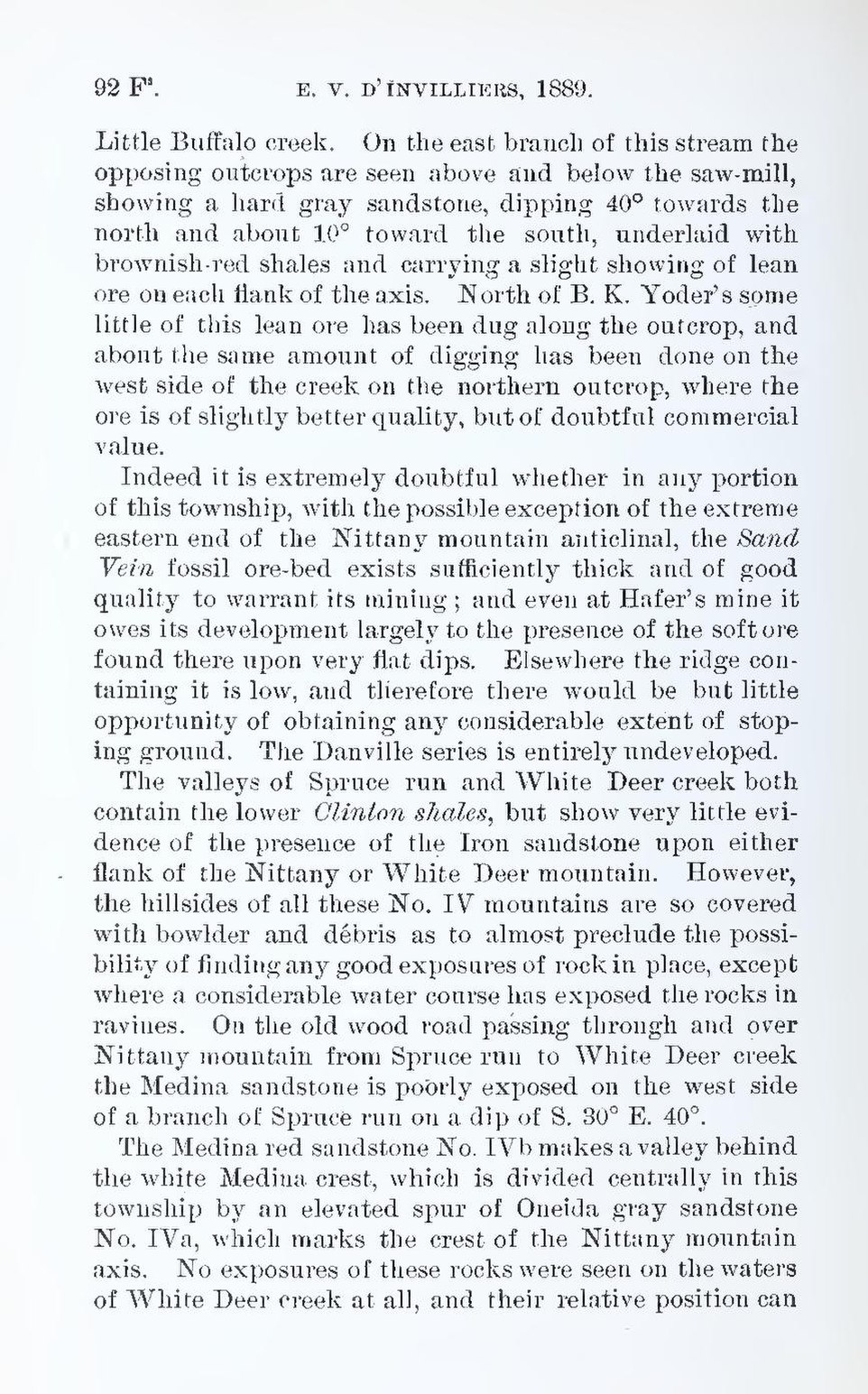Little Buffalo creek. On the east branch of this stream the opposing outcrops are seen above and below the saw-mill, showing a hard gray sandstone, dipping 40° towards the north and about 10° toward the south, underlaid with brownish-red shales and carrying a slight showing of lean ore on each flank of the axis. North of B. K. Yoder’s some little of this lean ore has been dug along the outcrop, and about the same amount of digging has been done on the west side of the creek on the northern outcrop, where the ore is of slightly better quality, but of doubtful commercial value.
Indeed it is extremely doubtful whether in any portion of this township, with the possible exception of the extreme eastern end of the Nittany mountain anticlinal, the Sand Vein fossil ore-bed exists sufficiently thick and of good quality to warrant its mining; and even at Hafer’s mine it owes its development largely to the presence of the soft ore found there upon very flat dips. Elsewhere the ridge containing it is low, and therefore there would be but little opportunity of obtaining any considerable extent of stoping ground. The Danville series is entirely undeveloped.
The valleys of Spruce run and White Deer creek both contain the lower Clinton shales, but show very little evidence of the presence of the Iron sandstone upon either flank of the Nittany or White Deer mountain. However, the hillsides of all these No. IV mountains are so covered with bowlder and débris as to almost preclude the possibility of finding any good exposures of rock in place, except where a considerable water course has exposed the rocks in ravines. On the old wood road passing through and over Nittany mountain from Spruce run to White Deer creek the Medina sandstone is poorly exposed on the west side of a branch of Spruce run on a dip of S. 30° E. 40°.
The Medina red sandstone No. IVb makes a valley behind the white Medina crest, which is divided centrally in this township by an elevated spur of Oneida gray sandstone No. IVa, which marks the crest of the Nittany mountain axis. No exposures of these rocks were seen on the waters of White Deer creek at all, and their relative position can
